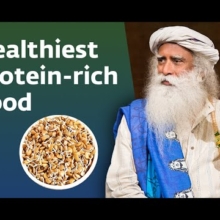Dietary Fats – Understanding Some Basic Concepts

When it comes living a healthy life, dietary fat are important for maintaining good overall health. This is all the more important as you advance in age. It is therefore necessary to understand that your body needs a regular intake of fat.
Consuming adequate amounts of dietary fat is important as they provide calories that your body uses for energy, support cell growth as well as protect and keep your organs warm.
Your body also needs fat to enable it effectively absorb the fat-soluble vitamins A, D, E, and K as well as to produce important hormones. Eating the right type and in the right quantity also helps to keep blood pressure under control.
However, it is also important to realize that what you eat can affect your LDL (bad) cholesterol. Getting to grips with which type of fats can raise your LDL cholesterol and the ones that do not is critical. This knowledge can significantly help to reduce your risk of heart disease and stroke.
Some fats are also good sources of two essential fatty acids – linoleic acid and alpha-linolenic acid.
It is therefore important to understand that trying to cut out all fat might actually deprive your body of one of its most essential nutrient.
Different Types of Fats
Fat is a complicated topic that inspires a lot debate among scientists and nutrition experts. The fact is that there is not just one “fat” but rather there are different types of fats.
It’s worth understanding the role fats play in a healthy diet. Thus it is good to look closer at the four broad different types of fats: saturated, monounsaturated fats, polyunsaturated fats, and trans fats.
You can find dietary fats in both animal and plant foods. The fact is that all dietary fats are composed of a mix of polyunsaturated, monounsaturated, and saturated fatty acids, in various proportions. Also, oils are generally unsaturated fatty acids, though they have small amounts of saturated fatty acids.
The four types have difficult chemical structures and physical properties. The reality is that some of these fats are good, some others good or bad – depending on certain factors, while some are downright evil.
The bad fats – saturated and trans fats – are generally solid at room temperature. On the other hand, the monounsaturated and polyunsaturated fats tend to be more liquid.
Irrespective of their type, each gram of fat has nine (9) calories. Fats are by nature more calorie dense than carbohydrates and proteins which have four (4) calories each per gram.
Saturated Fat
Saturated fats are generally considered to be the “bad” fats. Their chemical composition is such that they have no double bonds between carbon molecules because they are saturated with hydrogen molecules.
They occur naturally in many foods and are primarily sourced from meat and dairy products. These meat sources include beef, lamb, pork and poultry (with the skin on). Dairy sources of saturated fat include high-fat dairy foods like butter, margarine, cream, and cheese.
The plant-based sources of saturated fats include coconut, coconut oil, and cocoa butter. Others are palm oil and palm kernel oil which are generally called tropical oils. However, tropical oils in general do not contain cholesterol.
Additionally, sources of saturated fats include many fast, processed and baked foods such as pizza, deserts, hamburgers, cookies and pastries.
Monounsaturated Fats
Chemically, monounsaturated fats are simply fat molecules that have one unsaturated carbon bond in the molecule. They are generally liquid at room temperature but begin to turn solid when chilled. A typical example of monounsaturated fat is olive oil.
Oils that are rich in monounsaturated fats are also contain vitamin E – an antioxidant. Foods that have high amounts of monounsaturated fats are plant-based liquid oils like canola oil, olive oil, peanut oil, safflower oil and sesame oil.
Other good sources of monounsaturated fats include avocados and nuts like almonds, cashew, hazelnuts and pecans. Monounsaturated fats are also found in seeds such as pumpkin, sesame, and sunflower.
Polyunsaturated Fats
Polyunsaturated fats have more than one (“poly,” for many) unsaturated carbon bonds. Like the monounsaturated fats, they are also liquid at room temperature and turn solid when chilled.
They are found in greatest amounts in sunflower, corn, soybean, and cottonseed oils. Other good sources include flax seeds, pine nuts, pumpkin, sesame, sunflower and walnut.
However, animal fats contain only small amounts of polyunsaturated fats. Seafood such as herring, mackerel, salmon, trout, and tuna contain high amounts of a type of polyunsaturated fats called omega-3 fatty acids.
Trans Fats
Trans fatty acids are found primarily in oils created through an industrial process that adds hydrogen to liquid vegetable oils to make them more solid. Trans fat are structurally different from the unsaturated fatty acids and differ in their health effects.
Trans fats are found mostly in processed foods, such as fried foods, pastries, pizza dough, pie crust, and other baked goods. Some others are processed foods like biscuits, muffins, crackers and even some brands of microwave popcorn.
Types of Dietary Fat to Eat?
The main health concern about dietary fat consumption is the impact they have on blood cholesterol levels. There are also serious concerns about the increased risk of inflammation that consuming saturated and trans fats can cause in the body.
Saturated and trans fats in food cause a much greater increase in LDL cholesterol. However, eating healthy fats from the monounsaturated and polyunsaturated fats can help balance the cholesterol by decreasing LDL and increasing the good (HDL) cholesterol.
Eating fat containing foods is definitely part of a healthy diet. The idea should be to choose foods that provide healthy fats while equally aiming to maintain a calorie balance between the amounts of calories you eat from foods with the amount of calories you burn.
Source: http://EzineArticles.com/10106358











